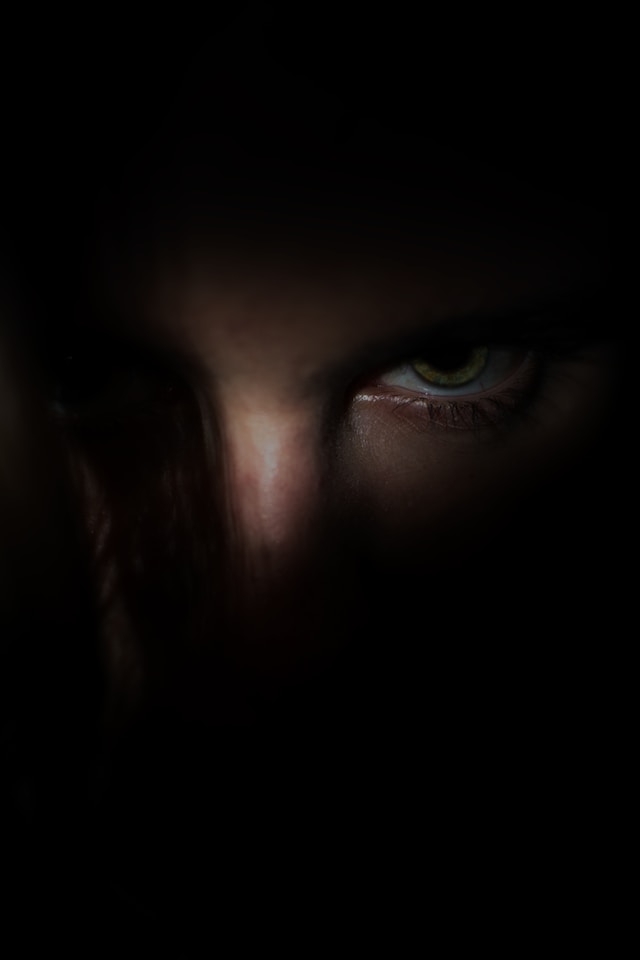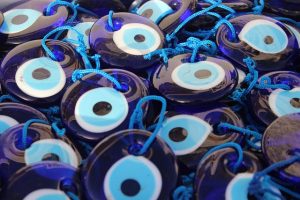 BP writes: “My cousin has an evil eye in his house. It is occult and can be dangerous, right?”
BP writes: “My cousin has an evil eye in his house. It is occult and can be dangerous, right?”
Absolutely. The evil eye is of the occult and is usually associated with witchcraft and the dark arts and is a form of spell casting. What your cousin has in his house is more than likely one of the many talismans that are used to ward off this particular curse, which I will explain later in this post.
For those who are not familiar with it, in his book, An Exorcist Tells His Story, Rome’s chief exorcist, Fr. Gabriele Amorth describes the evil eye as consisting of a spell cast by looking at someone with the intention of causing them harm.
“It does not come about, as many think, by believing that some individuals cause bad luck by just looking at you; this is nonsense. The evil eye is a true spell; in other words, it presupposes the will to harm a predetermined person with the intervention of demons. In this instance, the nefarious deed is achieved through the sense of sight. While I could never be certain that a particular spell was the result of the evil eye and whether a look had been sufficient, the effects were clear.”
These effects range anywhere from incessant yawning to grave misfortune and even death. Some cases report the afflicted becoming suddenly sluggish and nauseous after receiving the evil eye, and to suffer from a feeling of “having something inside you.” Others say this curse can kill or maim livestock, cause mechanical failure in machinery, even topple walls
Belief in the evil eye is as much cultural as it is spiritual and variations of it can be found among the Portuguese, Turks, Egyptians, Scandinavians, and especially the Middle East from where it is believed to originate.
In addition, there are many outlandish legends surrounding the evil eye, including a belief that two Popes possessed the ability to cast the evil eye involuntarily. According to these myths which were contrived to damage the Church, Pope Pius IX was thought to have this ability after he glanced at a nurse holding a child in an open window and the child supposedly fell to its death moments later. After this, legend has it that everything he blessed ended in some kind of misfortune. Pope Leo XIII was also believed to have suffered from the same affliction.
People are known to go to great lengths to ward off the evil eye, such as BP’s cousin who is more than likely using some kind of object that supposedly protects one from the evil eye.
Truth be told, devices of protection against the evil eye are a cottage industry. Talismans of all shapes and sizes, which are classified as “apotropaic” (Greek for “prophylactic” or “protective”), are sold around the world and vary according to culture.
 For instance, in the Middle East, disks or balls consisting of concentric blue and white circles representing an evil eye are common apotropaic talismans.
For instance, in the Middle East, disks or balls consisting of concentric blue and white circles representing an evil eye are common apotropaic talismans.
The Italians favor a charm called the cornicello (“little horn”) which is a long, gently twisted horn-shaped amulet carved out of red coral or made from gold or silver.
Evil eye jewelry is very common in Turkey, as are evil eye stones, known as nazars, which can be seen decorating everything from baby carriages to cell phones.
Superstitious rituals are another popular way of warding off the evil eye. In one tradition, a drop of oil in a glass of water is placed before a person suspected of being afflicted by the curse. If the oil dissolves, they have been cursed; if it floats on the surface, they have not been affected.
A popular Greek ritual involves floating a wick in a bowl filled with half oil and half water. After lighting the wick, special prayers are said. It is believed that the water absorbs the “bad energy,” which is then discarded.
In some cultures, people believe tying a tiger claw around one’s neck will help ward off the evil eye and that an infant can be protected by tying elephant hair around its wrist. Tattoos can also be applied as permanent protective measures.
Because curses are real, it is perfectly understandable for people to want protection from them. The problem is that, as the above illustrations show, they too often resort to another kind of occult mechanism or superstition for protection, which only compounds the problem. Relying on occult powers for protection is just as dangerous as relying on it to cast a curse or spell. Contact with the demonic is always contact with the demonic, no matter what the intention.
As Fr. Amorth says, the popular practice of wearing or using amulets and/or rituals to protect against the evil eye are all superstitions. One should have recourse to God through prayer, and not break the first commandment by relying on stones and trinkets (false gods) to protect themselves, he says.
Bishop Donald W. Montrose, writing in his excellent pastoral letter, “Spiritual Warfare: The Occult has Demonic Influence,” explains why resorting to the power of Jesus Christ is the most sensible and effective way to combat evil.
“Jesus is Lord and God. He is Lord and therefore has dominion over both the Kingdom of Light and the Kingdom of Darkness. Satan has no dominion over the Kingdom of Light. He is allowed a limited dominion over the Kingdom of Darkness.
“Therefore, if I am baptized and am living in the Kingdom of Light in the state of Sanctifying Grace, Satan has no dominion over me unless through fear I open the door to his influence. Sanctifying grace means that I am sharing in a mysterious way in the life of God Himself and He is dwelling in my soul (Rom. 5:5; 2 Cor. 6:15; John 14:23).
“However, when I commit a mortal sin, a serious sin, then I lose Sanctifying Grace and begin to live in the Kingdom of Darkness. Even though I have been Baptized and possibly Confirmed, I become somewhat vulnerable. As I persist, unrepentant in serious sin, I become vulnerable to the influence of Satan. . . .
“The Sacrament of Reconciliation and the Eucharist, (as well as all of the sacraments) are very special weapons that Jesus gave to his Church to overcome the Kingdom of Sin and Darkness. We need to use these sacraments as Christ meant them to be used and have no fear of the enemy.”
A sincere return to the sacraments and the proper use of sacramentals such as holy water and blessed salt, are far more effective protection against spiritual dangers than superstitious talismans and rituals that only serve to attract the dark powers we fear.
Speaking of sacramentals, being a Secular Carmelite, I would be remiss not to recommend the Brown Scapular of Our Lady of Mount Carmel for this kind of protection. I am a firm believer in the efficacy of this sacramental, not because it’s some kind of talisman, but because I believe that Our Lady means what she says when she promises to protect all who faithfully wear her “garment.” Brown scapulars cost less than $5 and can be found in most Catholic religious goods store.
However, a priest must invest the wearer before clothing them in the scapular. The proper prayers of investiture can be found at the bottom of this web page – Prayers for Blessing and Investitute in the Brown Scapular
© All Rights Reserved, Living His Life Abundantly®/Women of Grace® http://www.womenofgrace.com









